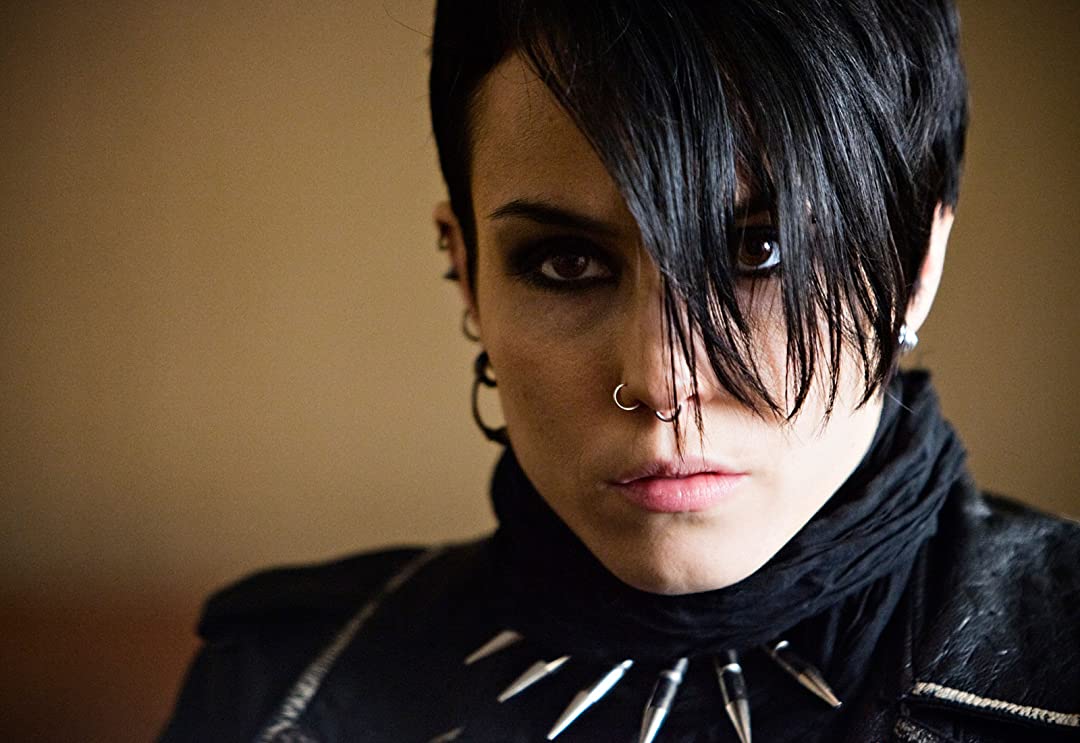By Chlotrudis Independent Film Society
Rating: 4.5 cats
Director: Niels Arden Oplev
Starring: Lena Endre | Michael Nyqvist | Noomi Rapace | Peter Andersson | Peter Haber | Sven-Bertil Taube

Original language title: Män som hatar kvinnor
Country: denmark, germany, norway, sweden
Year: 2010
Running time: 152
IMDB: http://www.imdb.com/title/tt1132620/
Jason says: “Stieg Larsson’s ‘Millennium’ novels – all three published posthumously, and given names that begin The Girl Who… in the United States – are kind of a big deal. How can you tell? Well, the three movies with high production values being made and released in rapid succession in Sweden are one way. The fact that the first, at least, got a fairly rapid turnaround for it’s US release is another. And that’s not all; I didn’t see this long, subtitled film released by a small distributor in one of Cambridge’s arthouses, but in one of Boston’s mainstream multiplexes, with a pretty decent crowd for a Sunday matinee. Hopefully that augurs well for the other two getting big American releases, as THE GIRL WITH THE DRAGON TATTOO has me wanting more.
“We start not with the title character, but with Mikael Blomkvist (Michael Nyqvist), an Stockholm investigative reporter who has just been convicted of libel. He will pay a hefty fine and serve a three month sentence, although it doesn’t start for six months. In the meantime, he steps down as publisher of the magazine Millennium, but he’s offered another opportunity: Octogenarian billionaire Henrik Vanger (Sven-Bertil Taube) would like him to find out who killed his niece Harriet in 1966; the evidence suggests that it must have been some member of his family (a greedy and disreputable bunch even if you ignored his brothers’ Nazi ties) and still active in the present. Fortunately, though Mikael doesn’t realize it at the time, he’s not working alone: Lisbeth Salander (Noomi Rapace), a ‘researcher’ for the security company that vetted Mikael for Henrik, hacked into his computer as part of the job and is still following his progress.
“Nyqvist is the first person billed in the credits, but I wouldn’t be terribly surprised if more than a few Mikael-centric scenes were cut so that, after the murder mystery, much of the rest of the film could focus on Lisbeth. She’s an unconventional sleuth to say the least – in the middle of a buttoned-down security firm, she’s a standoffish prodigy in gothy dress all the way to her multiple piercings and spiked collar, who has a scummy new parole officer who alludes to a history of mental problems (a marvelously repulsive Peter Andersson – seeing him, it’s no wonder she seems to prefer girls or has trouble with anger management). She makes Mikael seem rather tame – just a methodical, middle-aged reporter, albeit one with ties to the victim and a false libel conviction.
“Their paths don’t converge until some time into the movie, getting a good chance to see what Nyqvist and Rapace are capable of individually before seeing how they work together. Nyqvist is pretty good; he’s got a way of showing genuine emotion without being theatrical; even when he’s bitter or angry, there’s a level of maturity there as well. Rapace, meanwhile, gets to be much more demonstrative, especially in the beginning, with plenty of raw fear and fury. Once they come together, there’s a very enjoyable chemistry between them; Mikael sometimes not knowing what to make of her and Lisbeth very uncertain about how to deal with actually being given the respect she’s earned.
“It’s a good thing that they are so enjoyable to watch together, because while the scope of their investigation inevitably expands into multiple gruesome murders, it could potentially get very dry: For the most part, the events happened thirty-nine years in the past, and much of what Mikael and Lisbeth do is poring over old photographs, newspaper articles, and other records, and while that’s how mysteries get solved, it’s often not exciting cinema. Director Niels Arden Oplev and screenwriters Nikolaj Arcel and Rasmus Heisterberg do a good job of getting this data to us without making it seem too dry, which is especially helpful for those of us relying on subtitles. They also give the film plenty of time to breathe; although the film likely doesn’t have to be two and a half hours, the glimpses of Mikael’s and Lisbeth’s larger stories are interesting, and not just for how they’ll likely be picked up in The Girl Who Played with Fire. Even with that large canvas, I suspect a fair amount was cut – we’re told thirty Vangers could be suspects and only glimpse many briefly; the investigation into Mikael being framed mostly takes place off-screen (until the last act, I thought it was being saved for later episodes).
“What does stay in is done impeccably, though. The early scenes with Lisbeth and her parole officer are extremely effective in both gaining the audience’s sympathy and making them more than a little afraid of her, for instance; less obviously sinister but equally memorable is the moment when Henrik reveals why Harriet’s murder is a festering wound decades later (and the scene where it is revisited). The filmmakers also do an exceptional job of building their mystery without relying heavily on flashbacks or shocks. Lisbeth is one of the few characters in the present younger than middle-aged, and the film makes no apologies for that.
“I’m very curious to see what plans are for other two films in the trilogy; hopefully they’ll reach the U.S. as close on the heels of DRAGON TATTOO as in Sweden. Even if they don’t get the relatively high-profile release that this one did, it certainly seems likely that they’ll be worth checking out. 4 1/2 cats
“Seen 21 March 2010 at AMC Boston Common #9 (first-run)“
